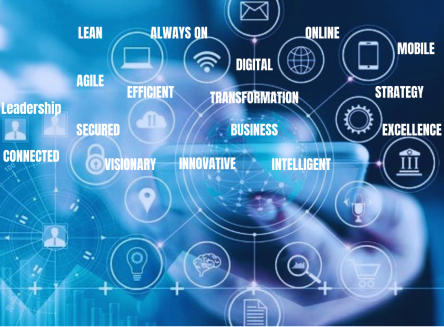DevOps is combination of development (Dev) and operations (Ops). As the name suggests DevOps is a framework and set of tools that ensure tight integration of development and operations management cycle.
DevOps need become stronger after year 2007 when internet technologies and platforms including social media platforms started being used heavily. This created a need for software companies and organizations to ensure that their IT development and operations management teams become tightly integrated to reduce errors, time delays, costs and more importantly become faster, highly reliable and accurate.
From year 2012 onwards DevOps became the norm for all software companies while from 2016 onwards most of the multinationals embarked on deploying DevOps frameworks and tools. In the past five years several specialized and automated DevOps tools have come up that offer seamless step by step integration for end-to-end IT development and IT operations management.
DevOps brings the development and operations team to work collaboratively together throughout the application lifecycle ensuring there is no gaps. DevOps is managed through set of automated tools that ensure each stage of handover is well checked and moved on to next stages without any gaps. DevOps framework and tools ensure continuous delivery and continuous integration along with version controls, logs and automation of tasks for all stages.

The DevOps high level framework consists of 8 stages. Let’s understand each of them briefly.
1. Plan – DevOps planning stage is focused on agile planning and delivery. Agile development is an iterative development approach for continuous delivery.
2. Code – DevOps code stage is focused coders completing their coding packages and passing it on to build.
3. Build – DevOps build stage is focused on combining and compiling the code packages to get them ready for testing.
4. Test – DevOps test stage is focused on testing and related rework completion to get the packages ready for release.
5. Release – DevOps release stage gets the finalized tested and built packages ready for final quality check and release. This is also the phase where continuous delivery and continuous integration comes together.
6. Deploy – DevOps deploy stage gets the packages deployed in production and moved on to monitor stage.
7. Monitor – DevOps monitor stage is focused on monitoring the success of deployment and address any issues faced.
8. Operate – DevOps operate stage is business as usual stage where normal operations continue. From this stage the next set of changes are fed to the plan stage and then the cycle continues.
Now let’s have a quick look at key tools that can be used at each stage of the framework. Organizations that operate the DevOps environment, use these tools to automate the entire DevOps application life cycle. There are many more tools and platforms available while below are the best tools/platforms that are used by many organizations.

There are other aspects of DevOps as well which are slowly evolving. In past couple of year DevSecOps has come up as security is important. DevSecOps brings integration of IT development (Dev), security (Sec) and operations (Ops) ensuring IT security is taken care at each stage of the framework and entire end to end lifecycle.

The latest framework relating to DevOps is called MLDevOps or MLOps. It integrates Machine Learning (ML), Development (Dev) and Operations (Ops) together. MLOps or MLDevOps is currently used by organizations dealing with big data analytics where they need to clean and model data using data science and machine learning techniques and algorithms. MLOps helps integrate and automate the entire process for machine learning applications life cycle management.

There are many benefits of DevOps, while only organizations requiring continuous delivery and continuous integration should invest in this. DevOps will become a mandatory need for most organizations as all of them use internet-based applications that require agility and accuracy in managing changes and releases.
As we move towards using machine learning, artificial intelligence, robotics automation, mixed reality, blockchain, metaverse technologies, we will need full end to end automation of application development and operations lifecycle. We will need all of it to work seamlessly with agility and accuracy.
I hope by now you have developed a good understanding on DevOps and why we need it. The need for DevOps and its evolving frameworks will continue to increase in coming period.



